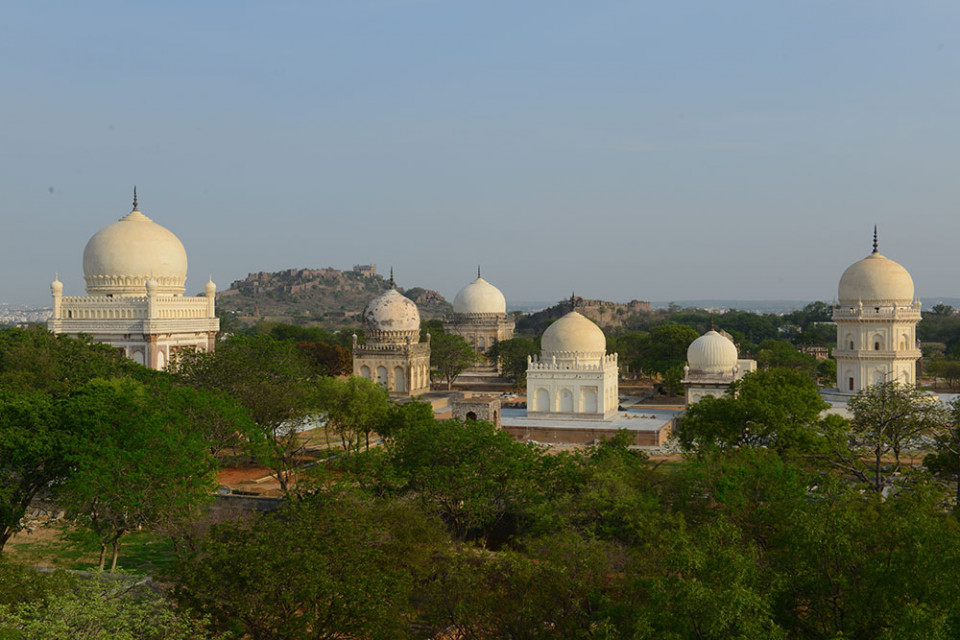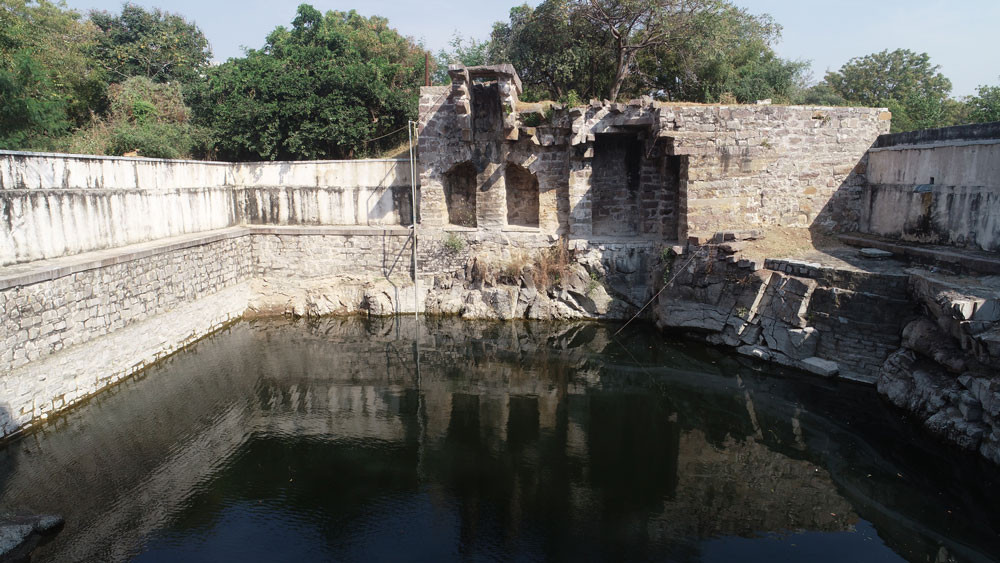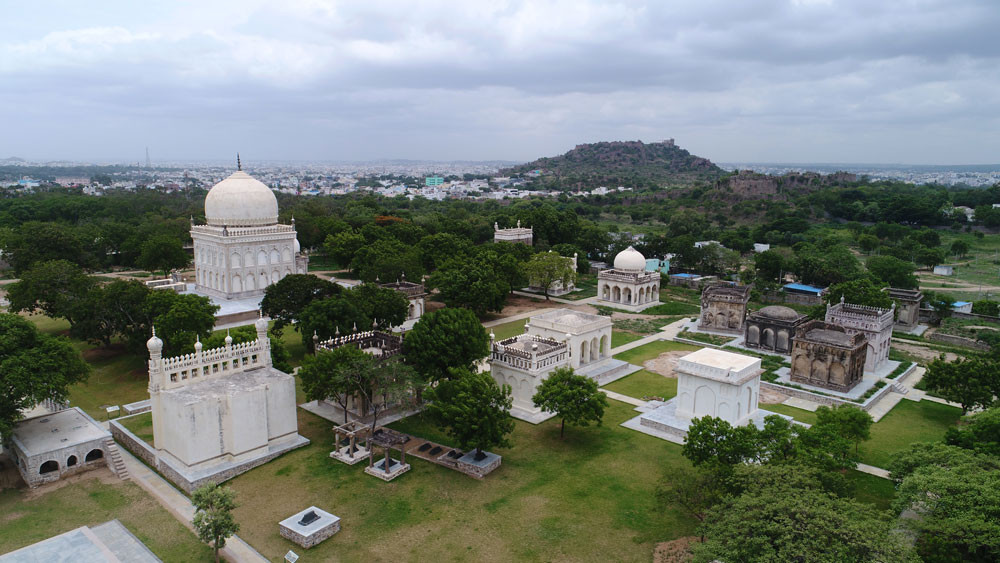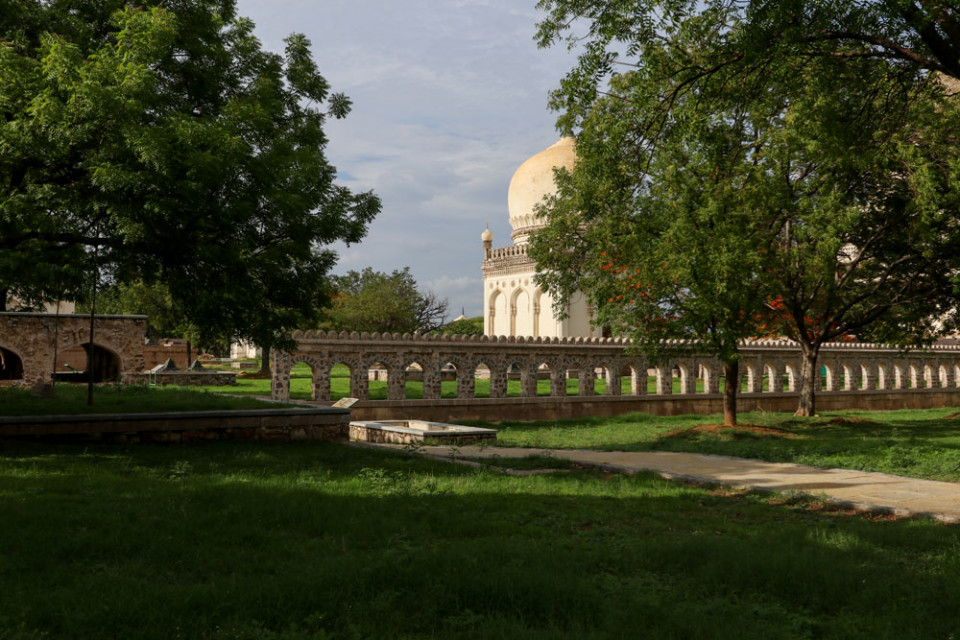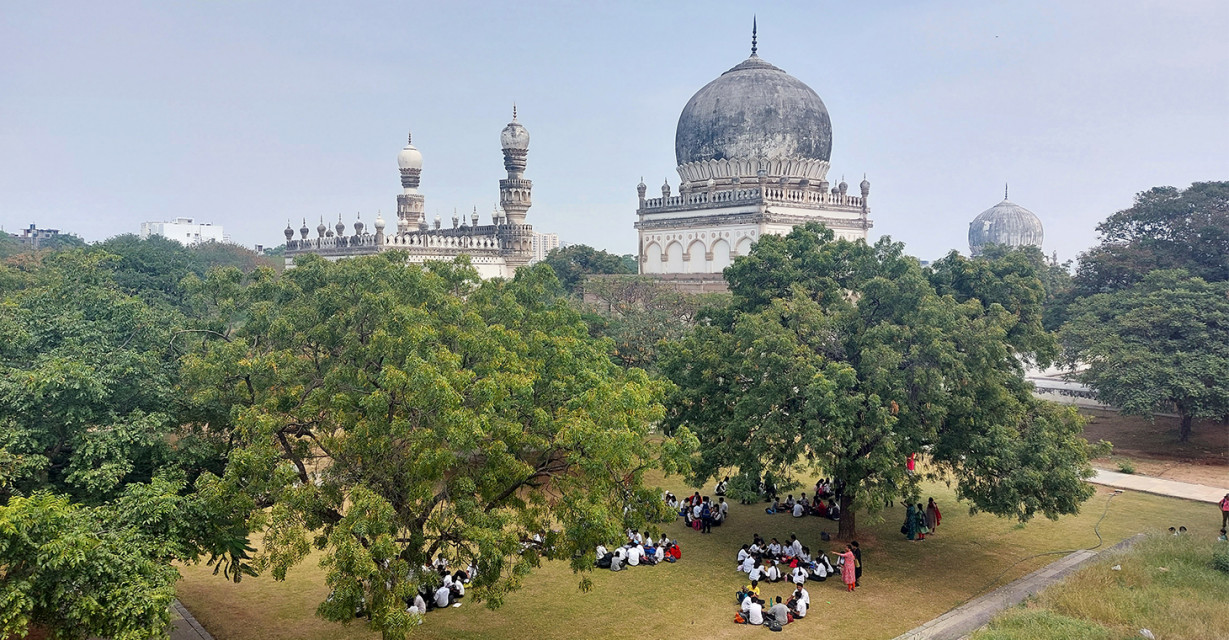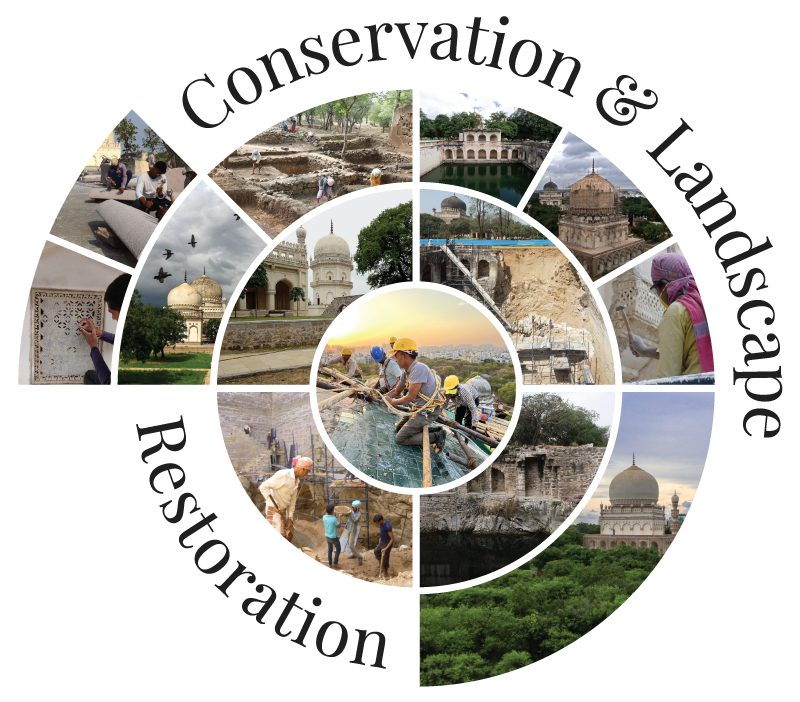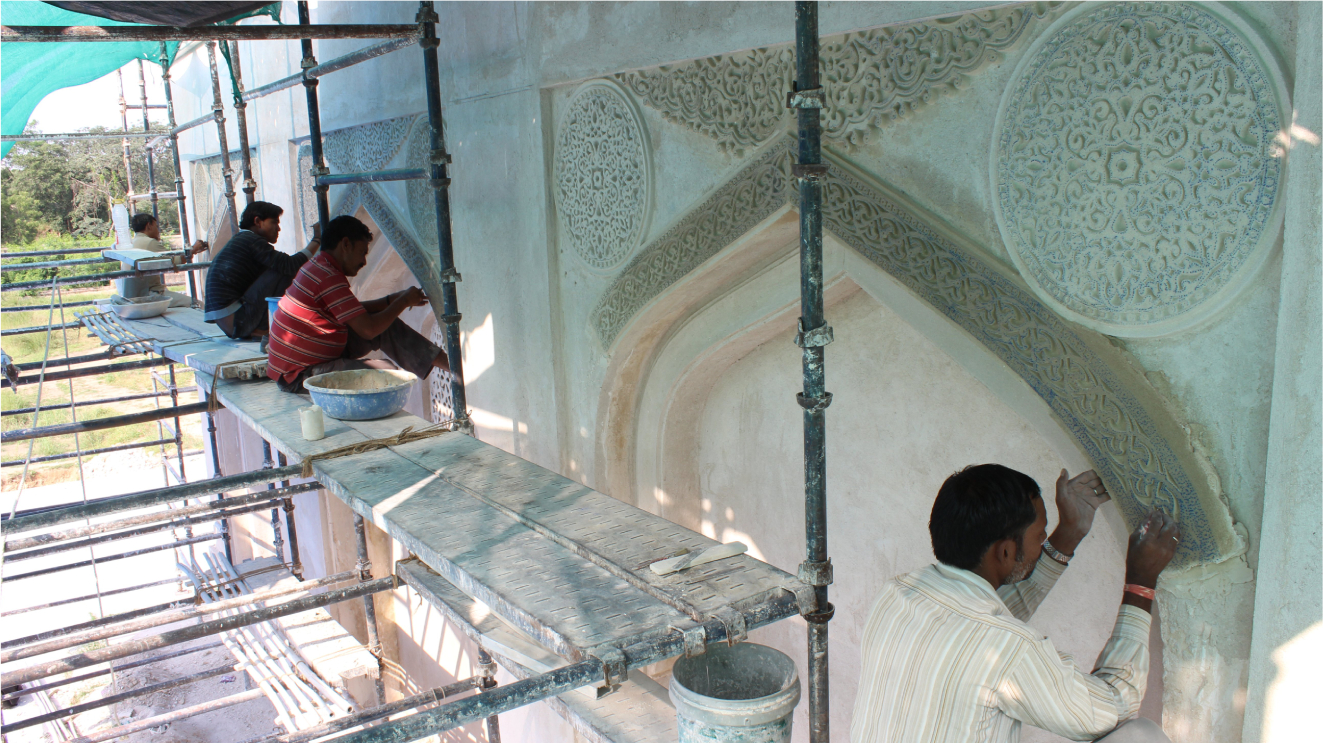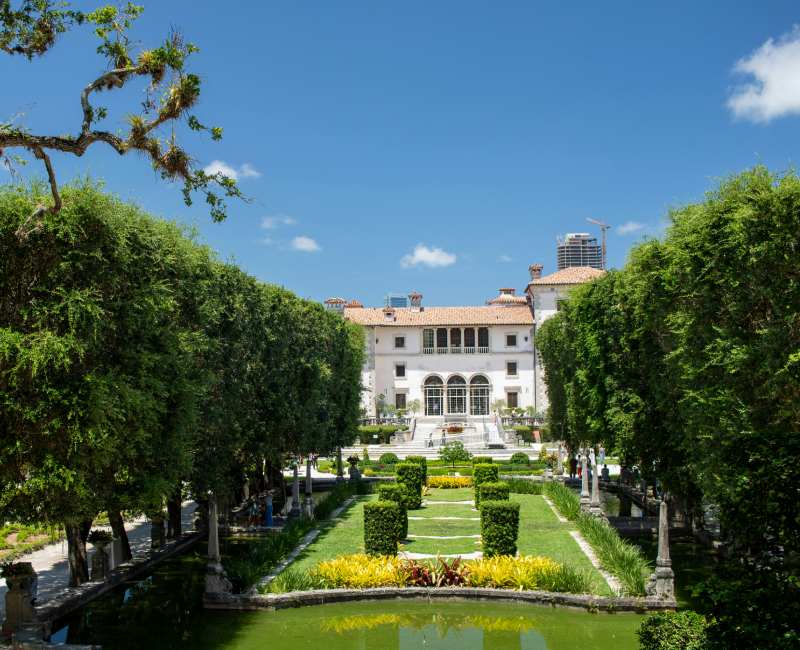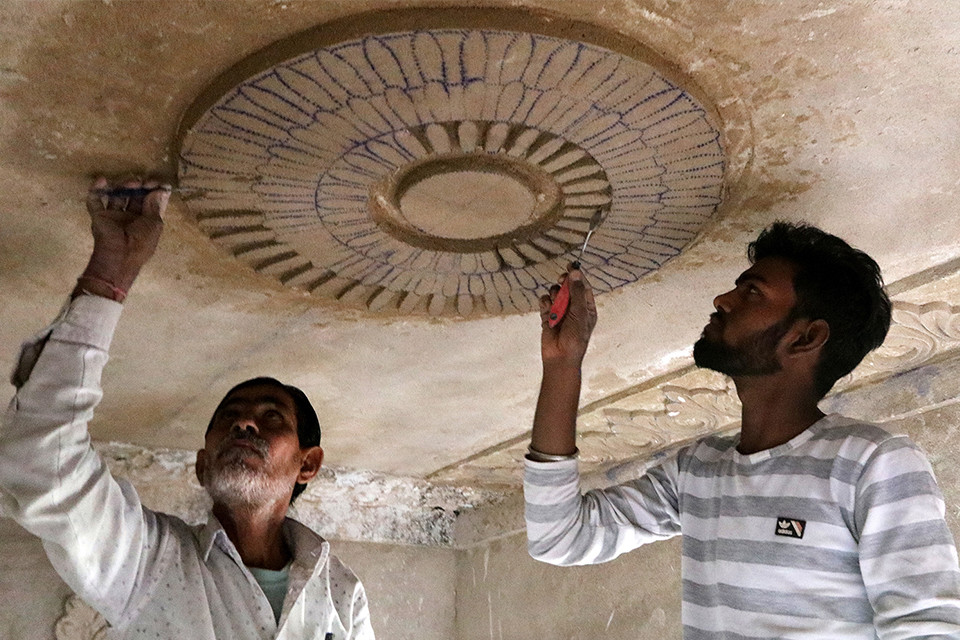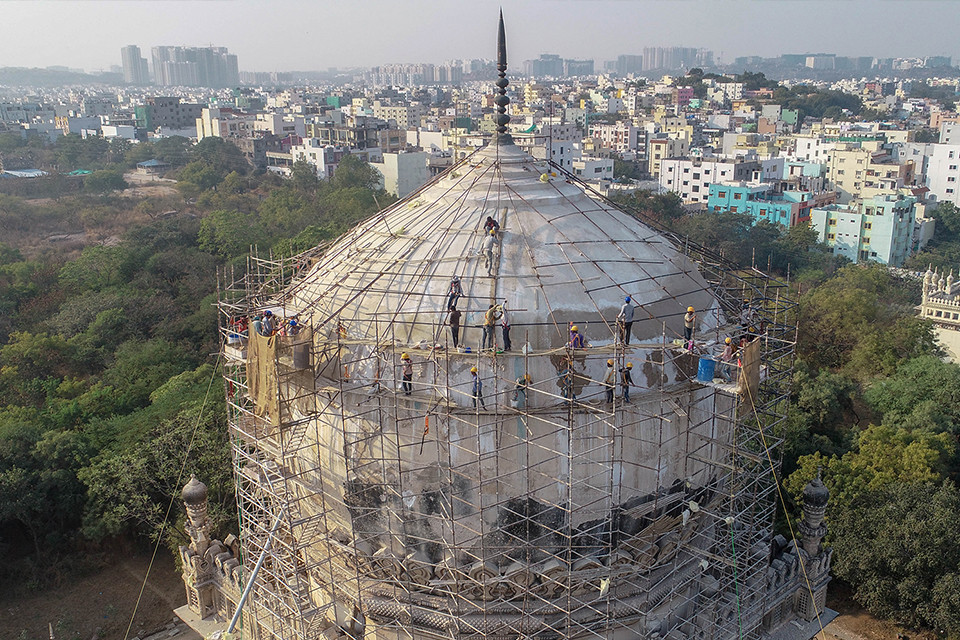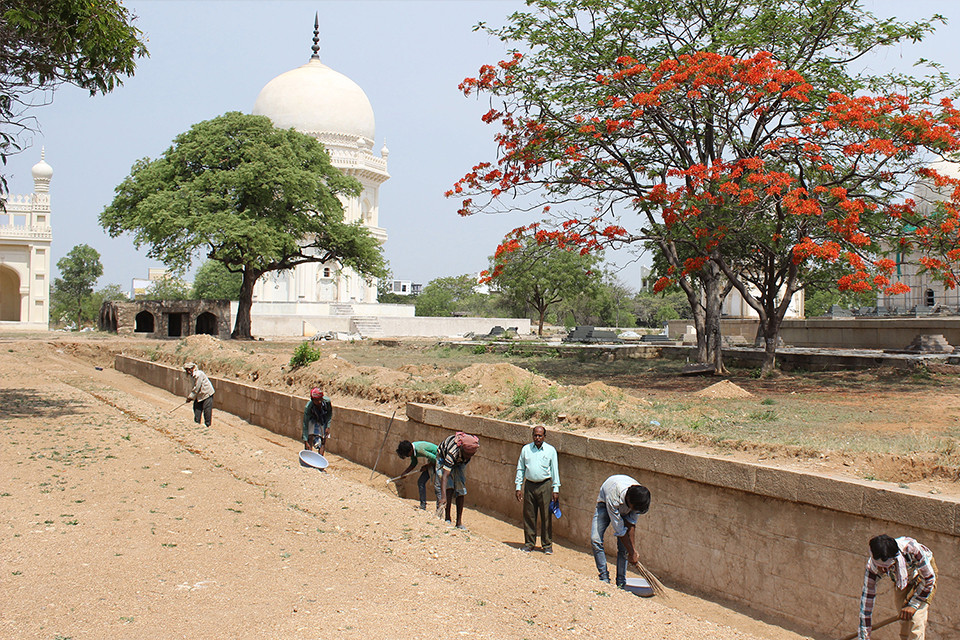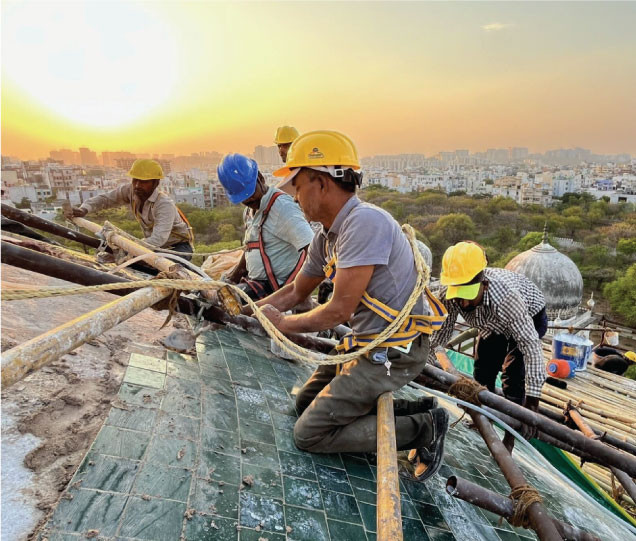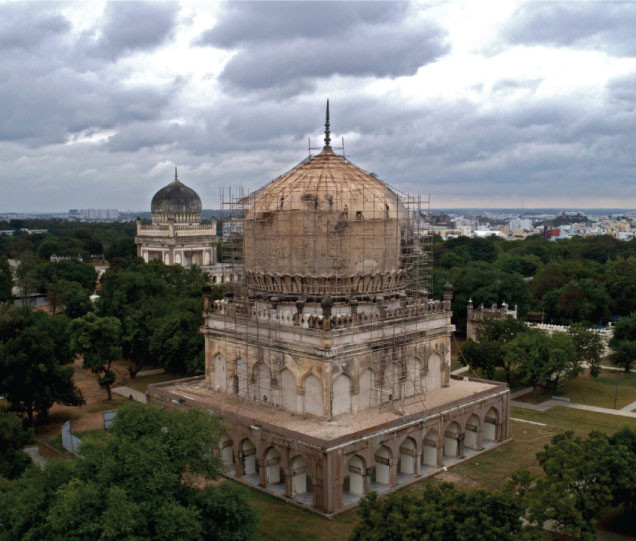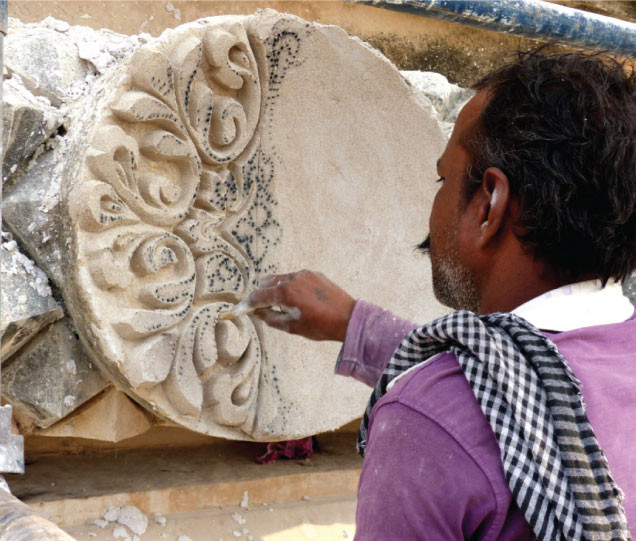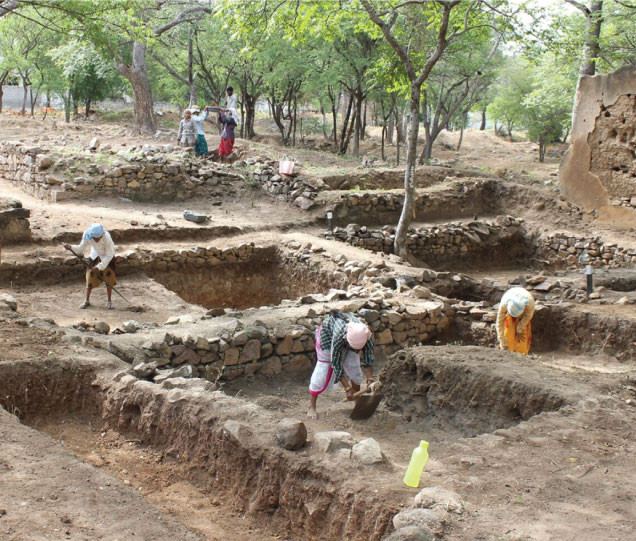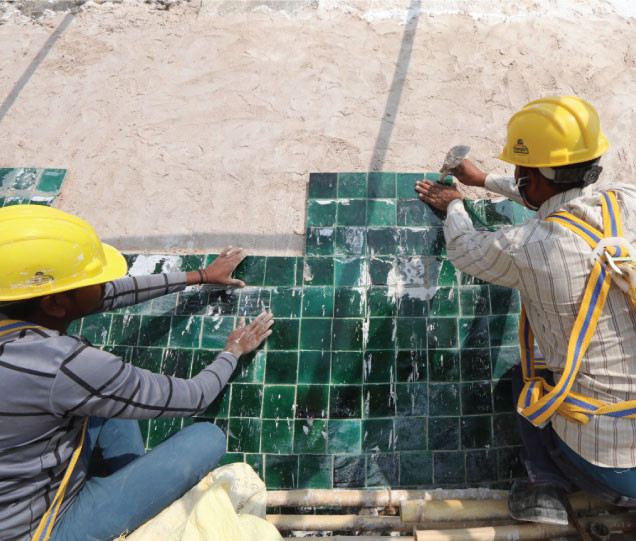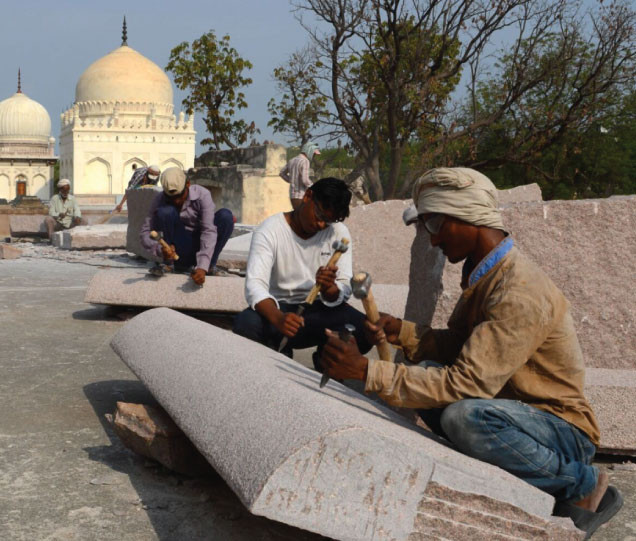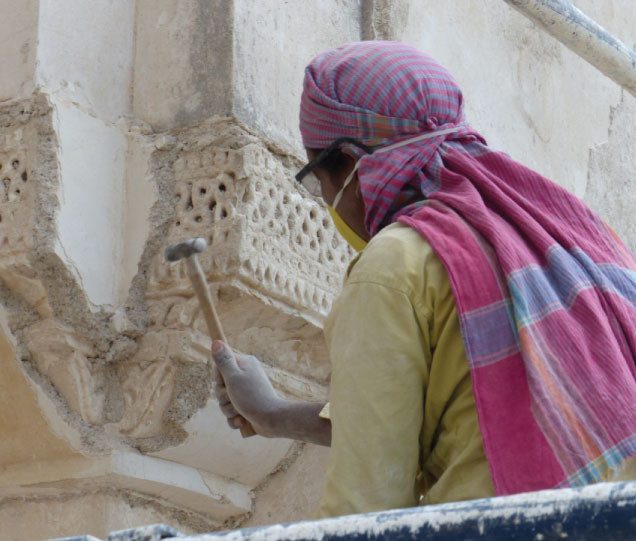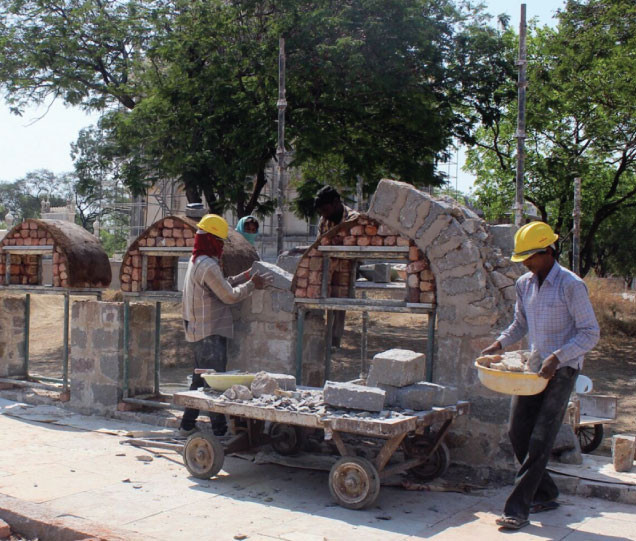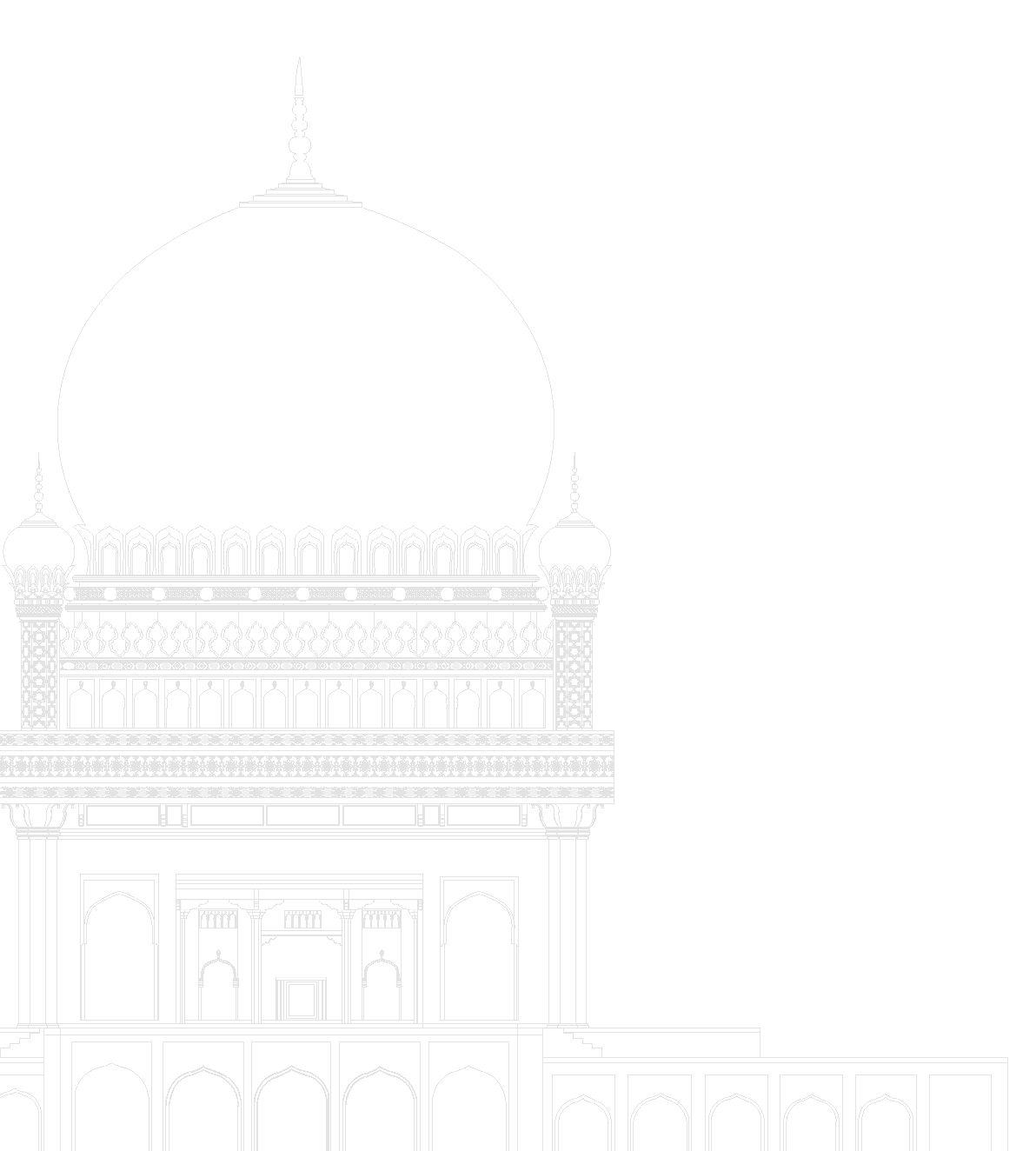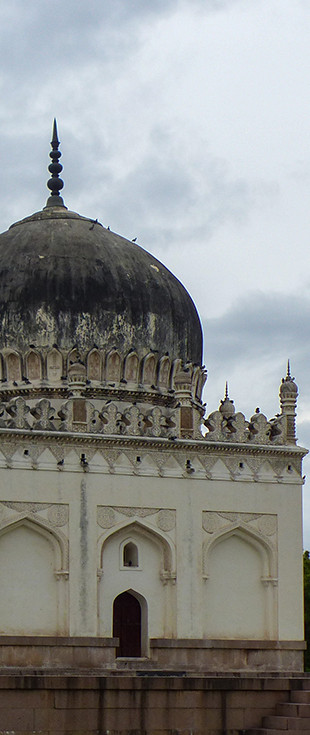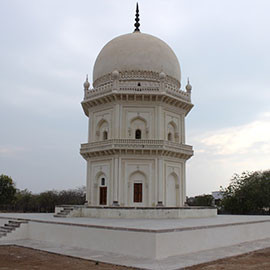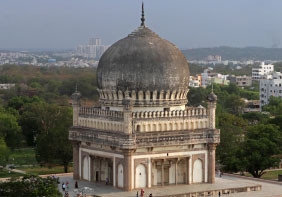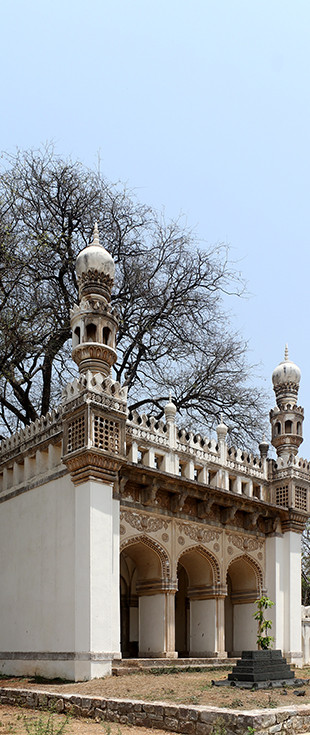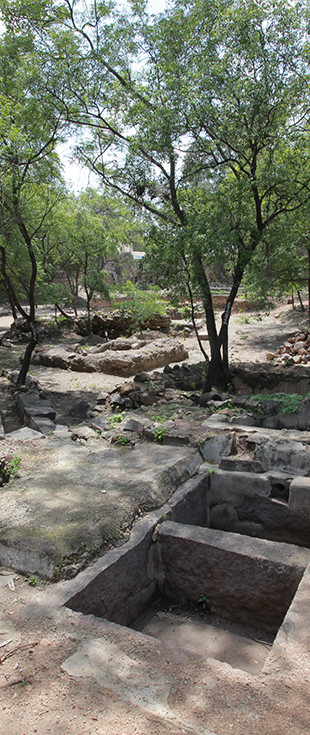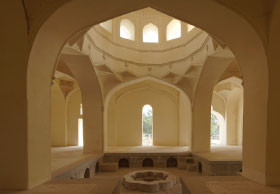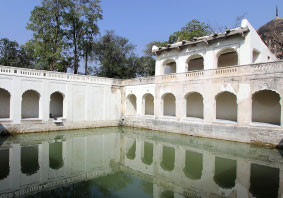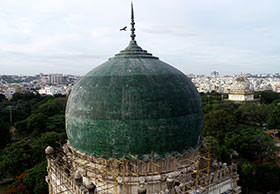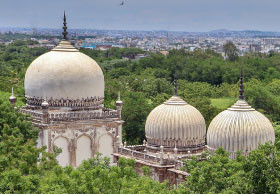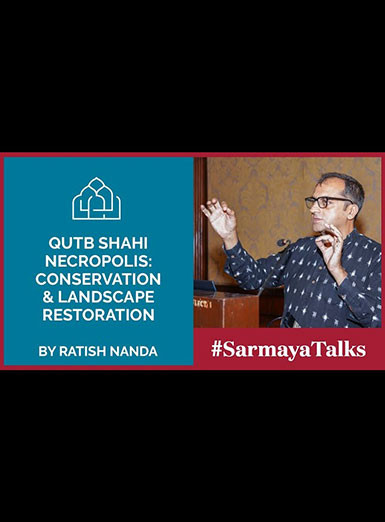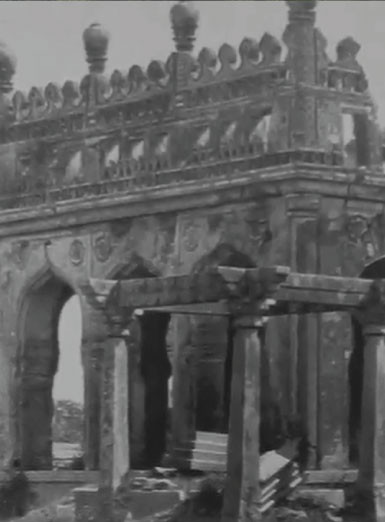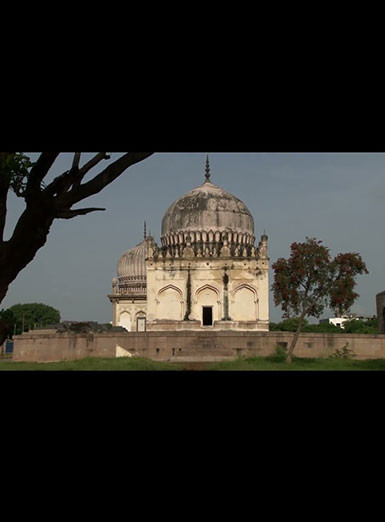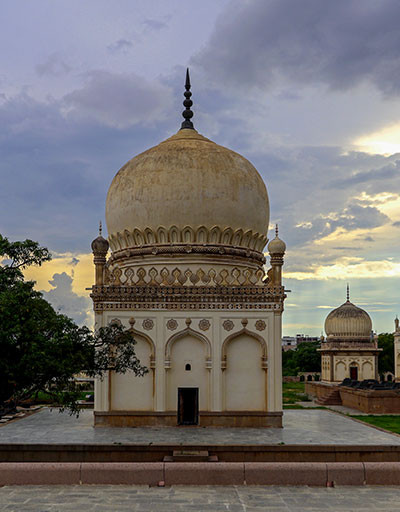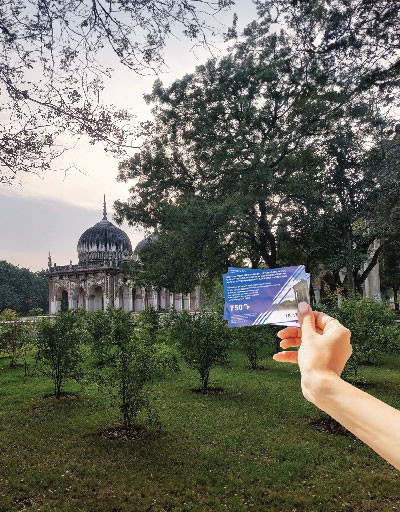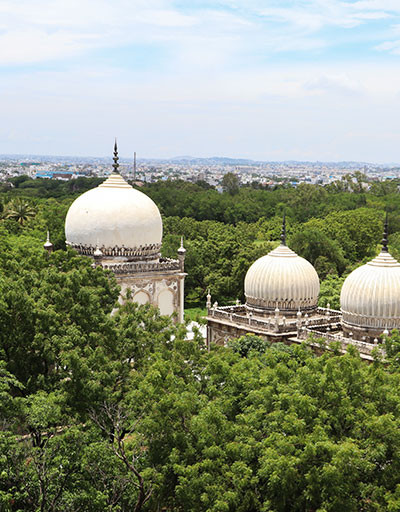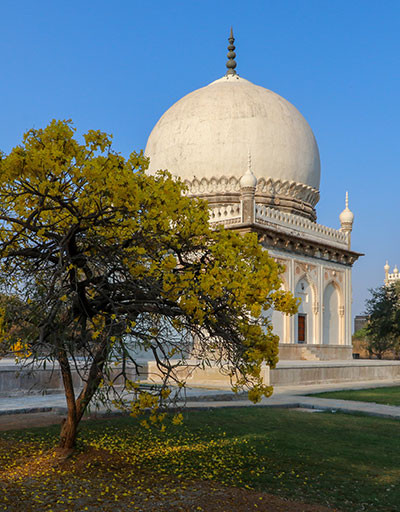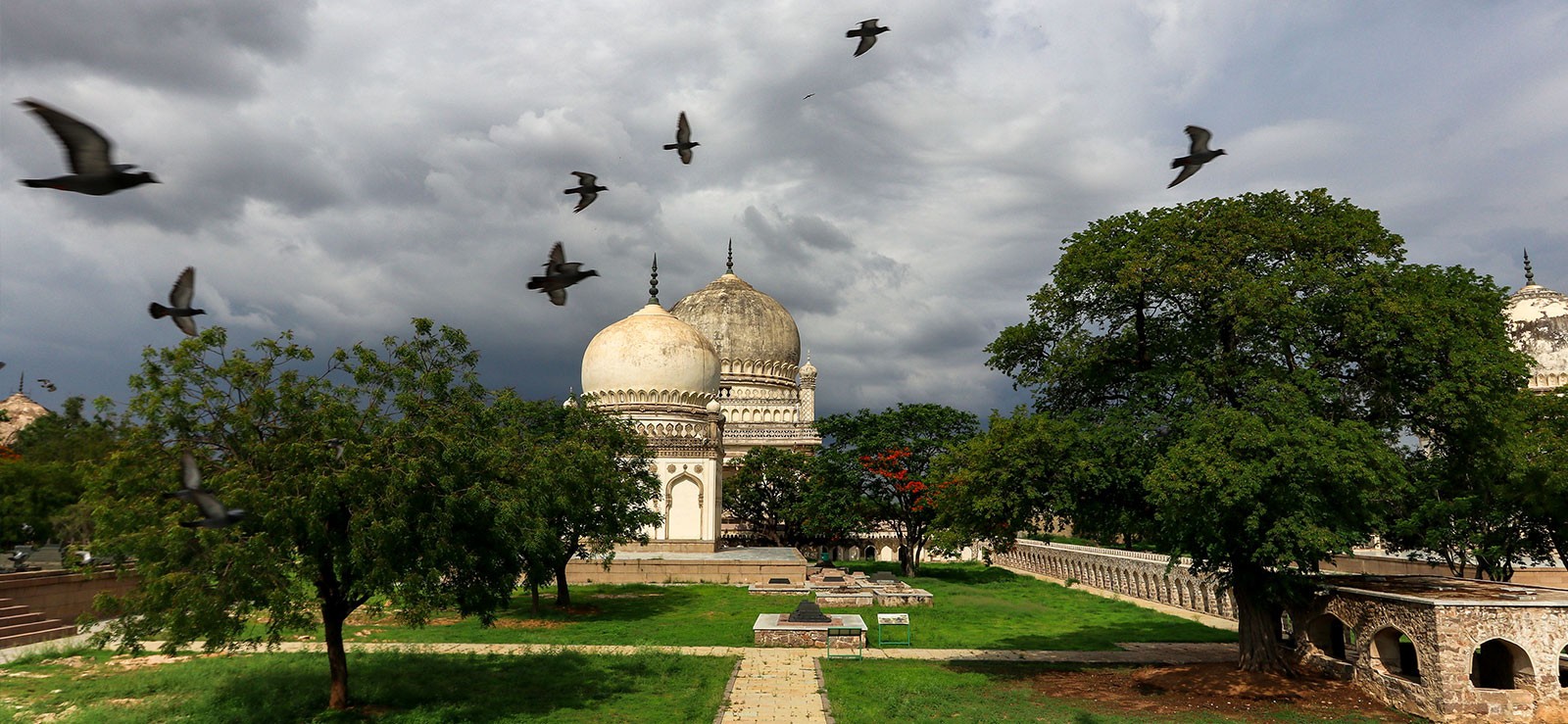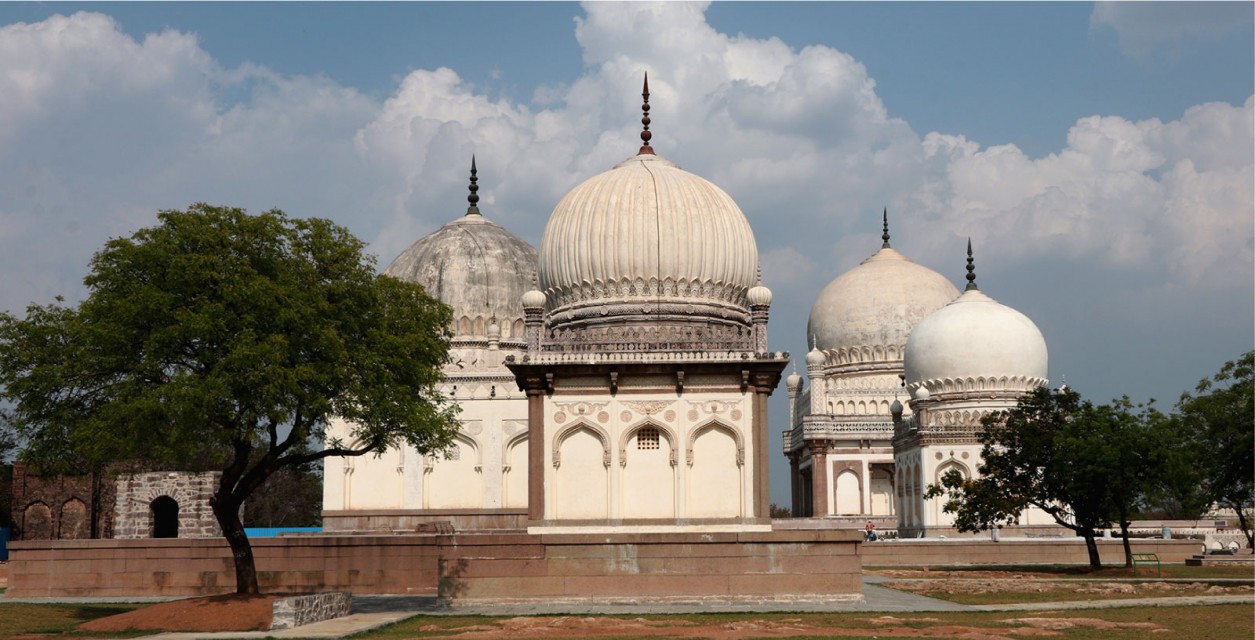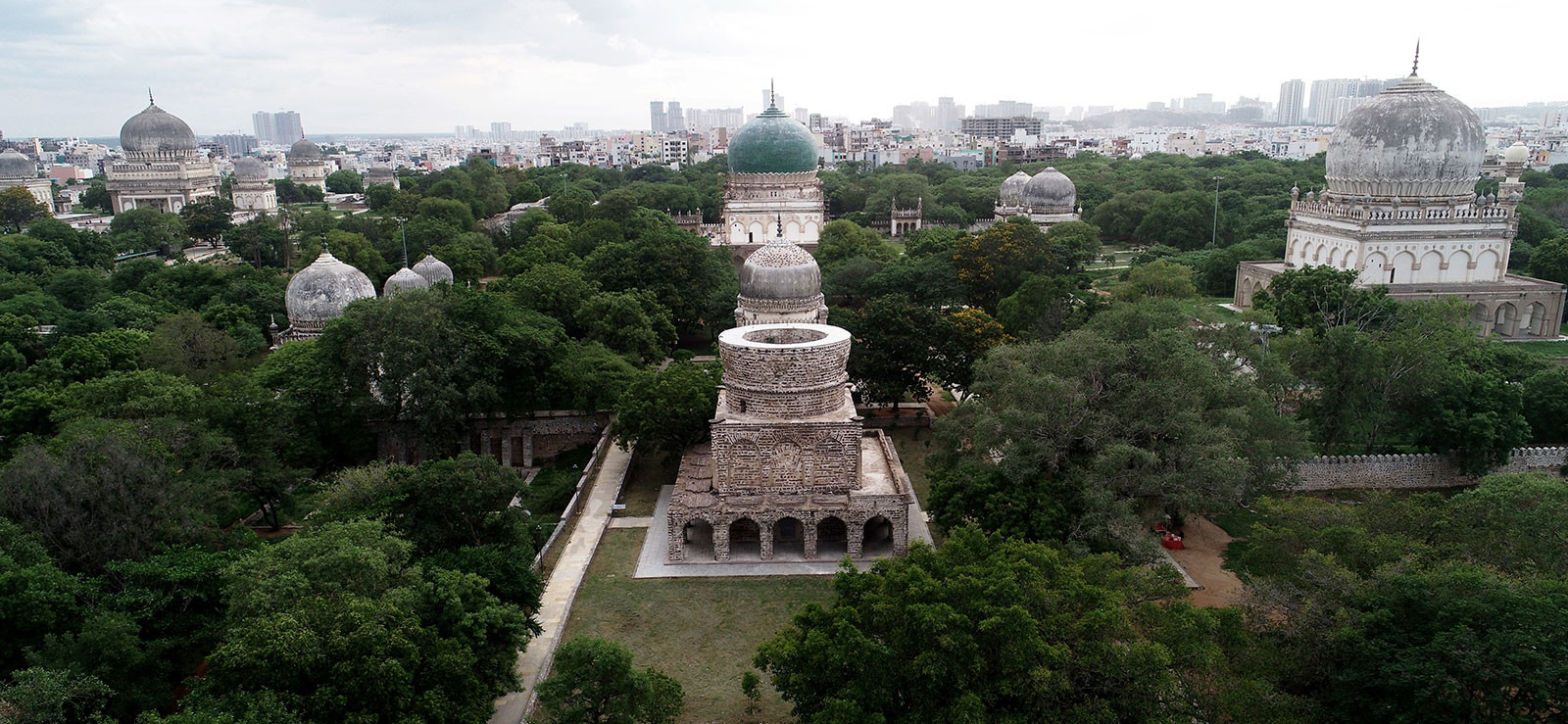
The Qutb Shahi dynasty
Established by Sultan Quli Qutb-ul-Mulk in AD 1518, the The Qutb Shahi dynasty ruled for
169 years from Golconda; while its adjoining area, now known as the Qutb Shahi Heritage
Park, served as a necropolis to the dynasty, which came to an end in AD 1687.
Read More
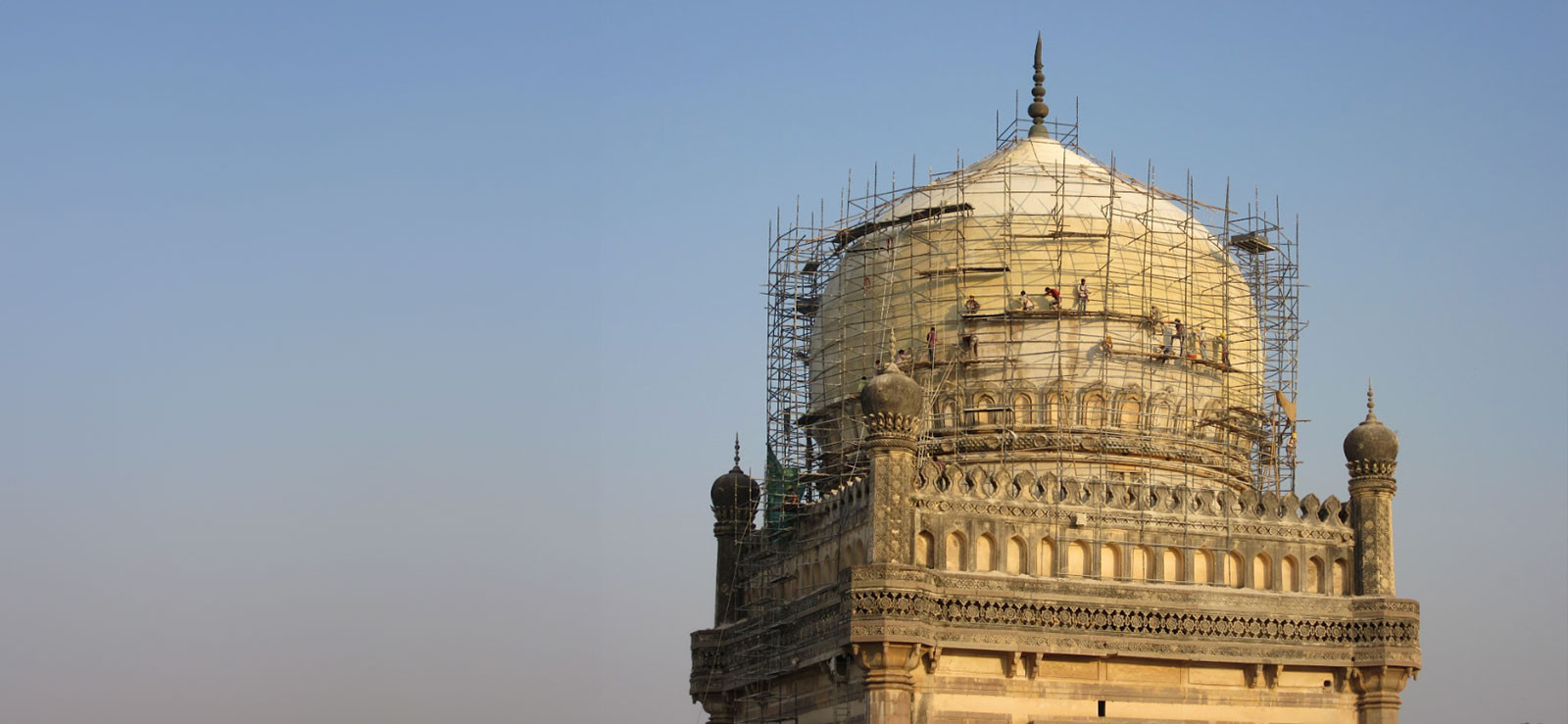
Conservation & Landscape Restoration
India is fortunate as building craft traditions have been passed down generations. Craftsmen take great pride in replicating or even excelling the work of their forefathers, using tools and techniques depicted in paintings, contemporary to the buildings worked upon at Qutb Shahi Heritage Park.
Read More
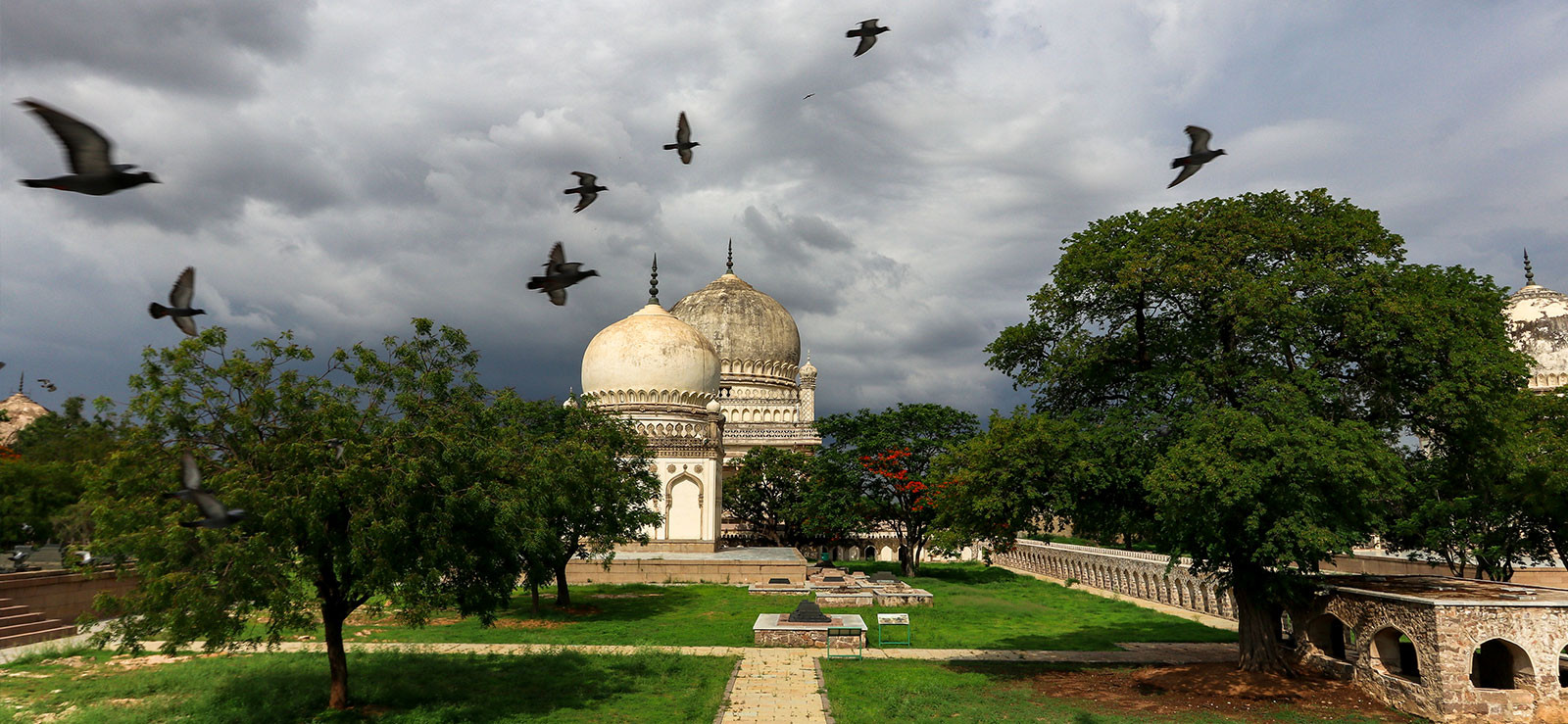
Environment Development
The landscape masterplan prepared for the necropolis at the onset of the project in 2012, envisaged an ecological buffer zone to the north, south and west of the site. Here, 15000 trees are to be planted of native species, providing Hyderabad with a significant green space.
Read More
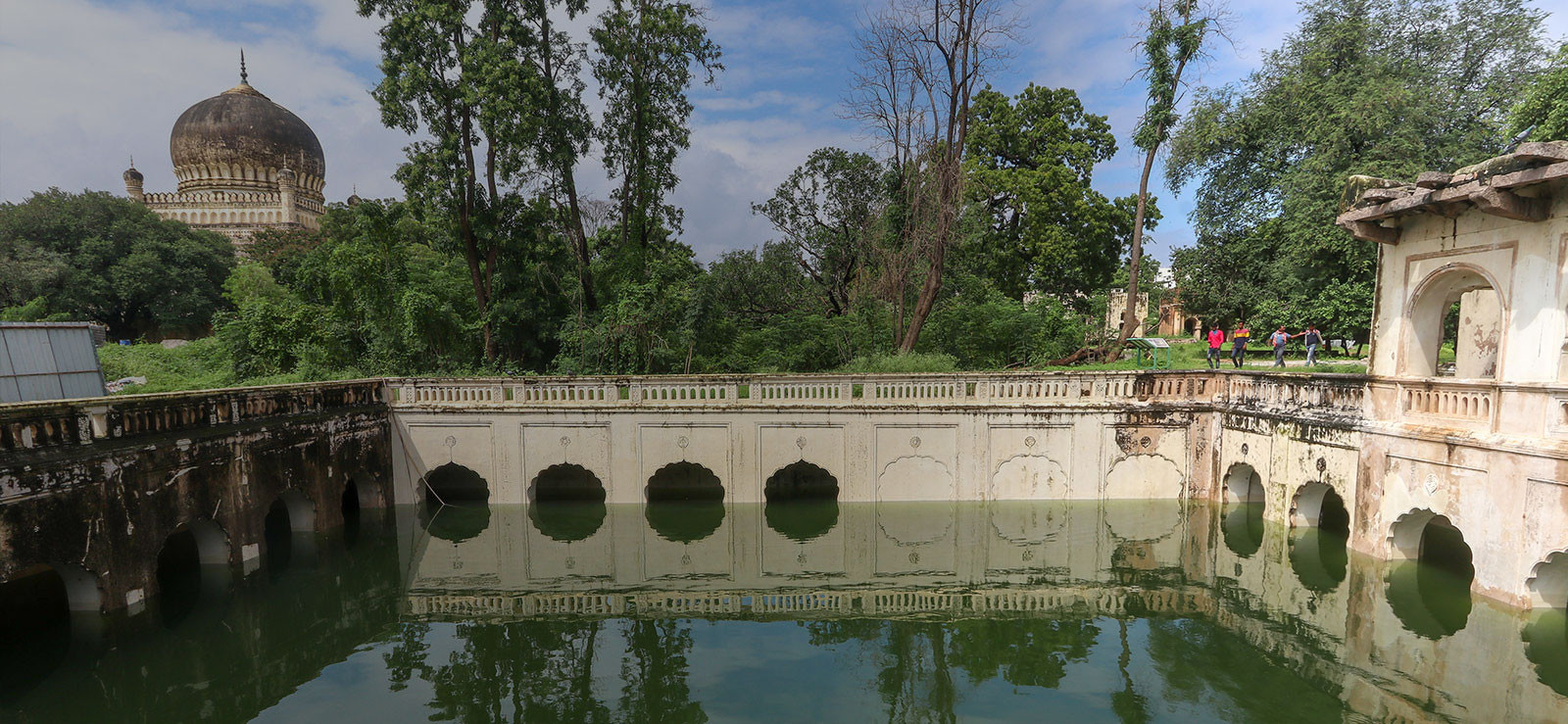
Qutb Shahi Baolis
Along with each grand mausoleum and its garden setting, a baoli or stepwell was built to hold water required for construction and horticulture.
Archival records reveal that the 106-acre ensemble had at least eight such stepwells. Six stepwells were discovered, desilted, reconstructed, and the earth levels re-graded. across over 100 acres to allow rainwater to collect in these conserved step wells that now can collect 21 million litres of rainwater annually – required for irrigating the 10000 + trees now planted here.
Read More
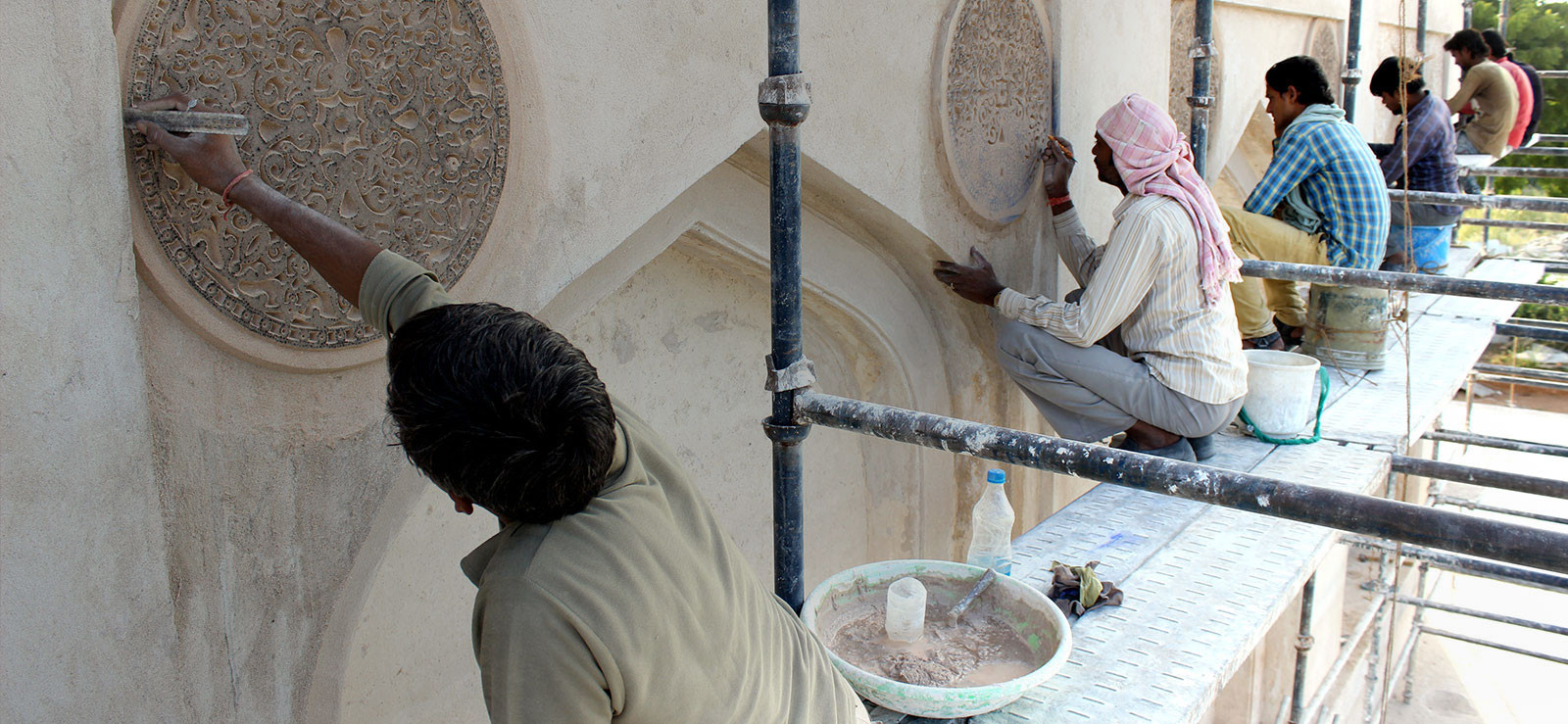
Honouring the Past: Skilled Hands, Timeless Techniques
Traditional craftsmen have played an integral part in the conservation approach at the Qutb Shahi Heritage Park, and from the onset, the project has followed a ‘craft-based approach’. The project has included a significant training component aimed at making craftsmanship sustainable.
Read More






